It’s been a bit quiet on the WW2 pigeon cipher front (the GCHQ Historian has been working hard to try to find some Typex rotor wiring diagrams for us, but so far without any luck, *sigh*), but I thought you might like to see some nice action shots of pigeons and pigeon handlers from WW2 archives.
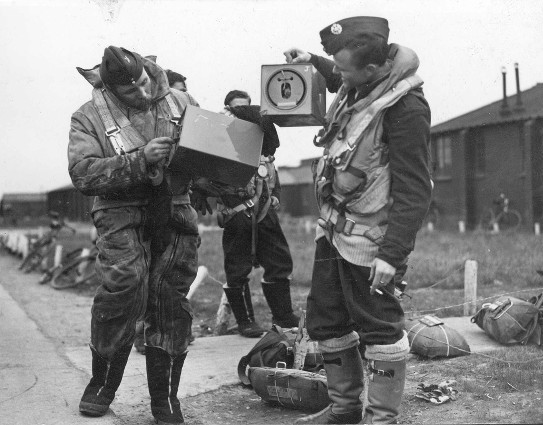
H98.100/4278 Shows two of the crew of an Australian Lancaster Squadron with their pigeons before leaving for a raid on Berlin – Argus Newspaper Collection of Photographs, State Library of Victoria.
(The remainder of the photos were taken by Army photographer H. J. Nott.)

H2000.200/418 A.T.S. woman being shown how to release a pigeon – Argus Newspaper Collection of Photographs, State Library of Victoria.
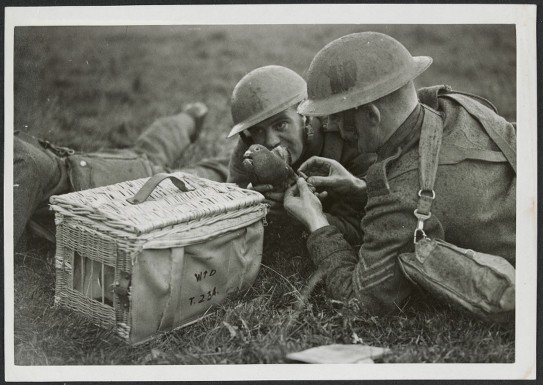
H2000.200/419 Attaching a message to a bird for dispatch – Argus Newspaper Collection of Photographs, State Library of Victoria.
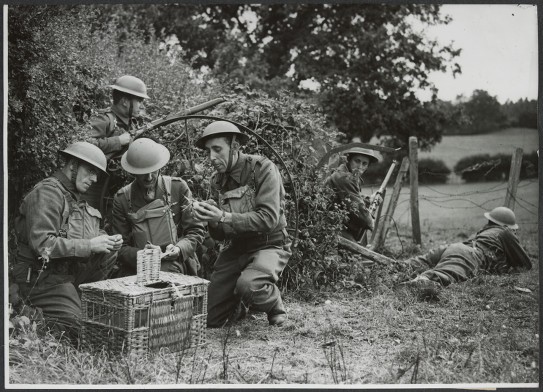
H2000.200/420 Officer in the field writing a message for dispatch by pigeon – Argus Newspaper Collection of Photographs, State Library of Victoria.
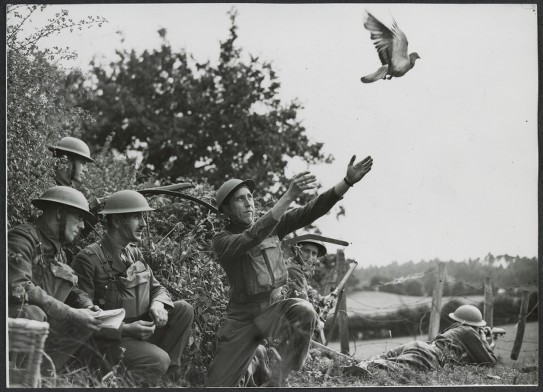
H2000.200/421 Releasing the pigeon – Argus Newspaper Collection of Photographs, State Library of Victoria.
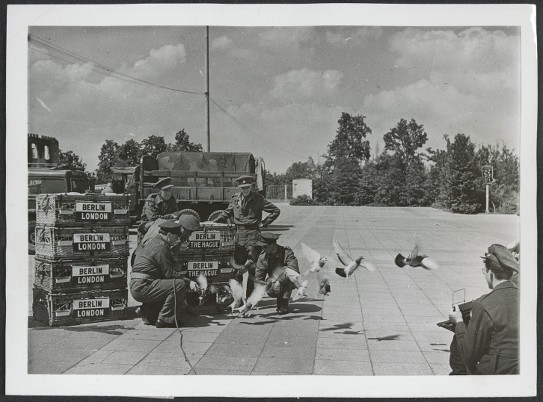
H2000.200/422 Last flight of B.L.A. war pigeons – Argus Newspaper Collection of Photographs, State Library of Victoria.
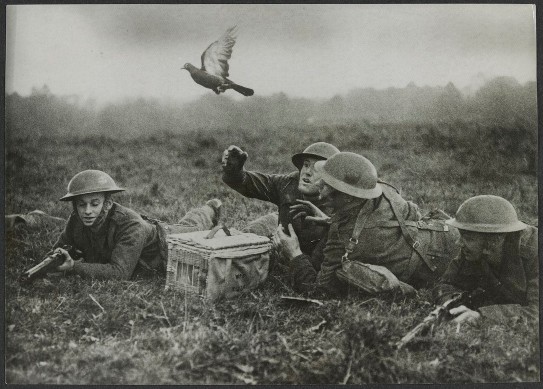
H2000.200/423 Releasing pigeons in the field – Argus Newspaper Collection of Photographs, State Library of Victoria.
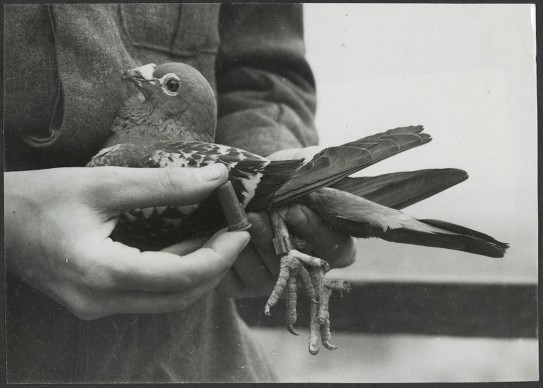
H2000.200/424 Attaching message cylinder to pigeon’s leg – Argus Newspaper Collection of Photographs, State Library of Victoria.
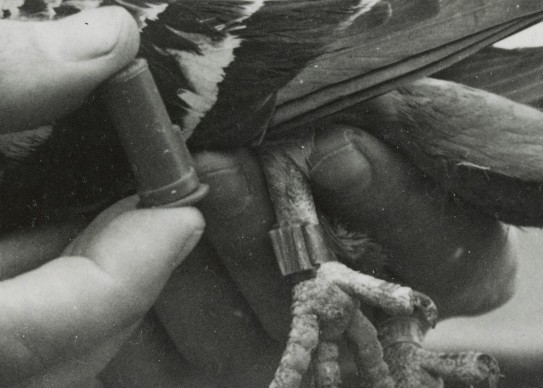
H2000.200/424 Attaching message cylinder to pigeons leg (closeup) – Argus Newspaper Collection of Photographs, State Library of Victoria.

H2000.200/425 “Premier” the pigeon arriving home with a message – Argus Newspaper Collection of Photographs, State Library of Victoria.
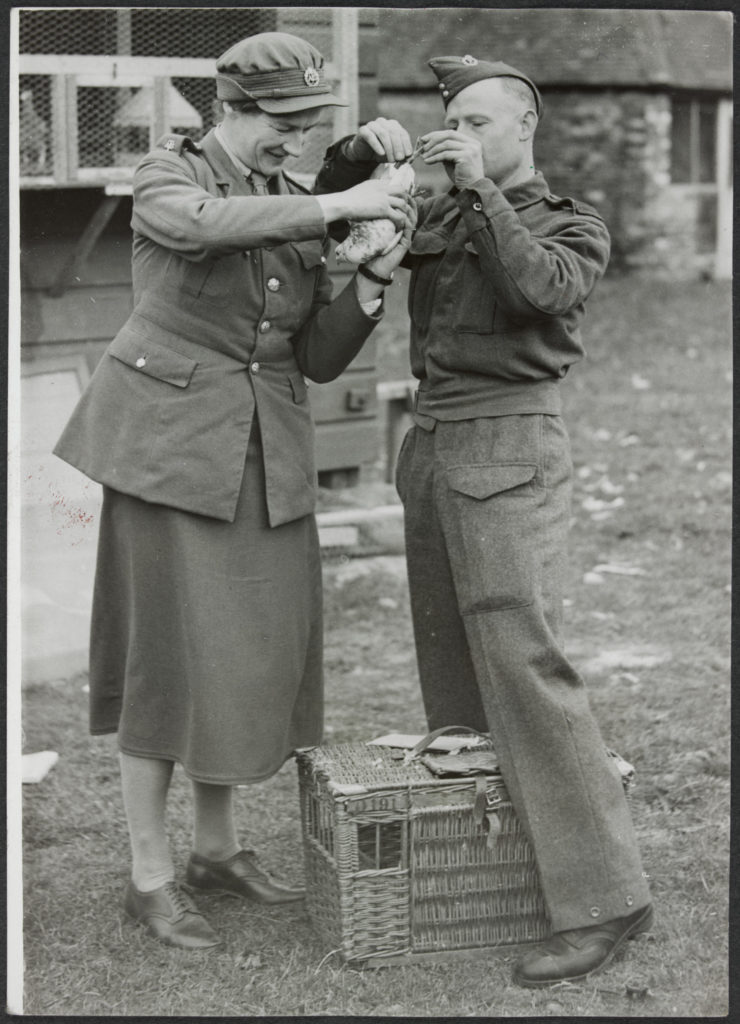
H2000.200/426 Showing A.T.S. woman how to attach a message – Argus Newspaper Collection of Photographs, State Library of Victoria.
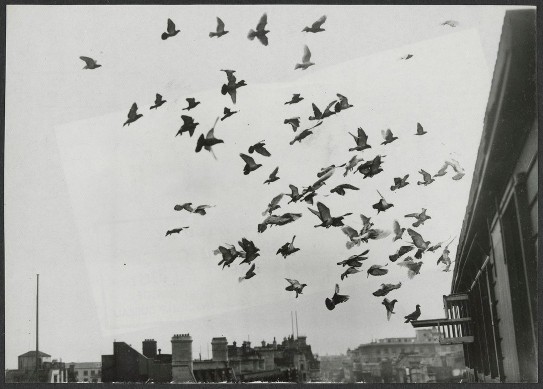
H2000.200/427 Birds arriving back in lofts after training flight – Argus Newspaper Collection of Photographs, State Library of Victoria.
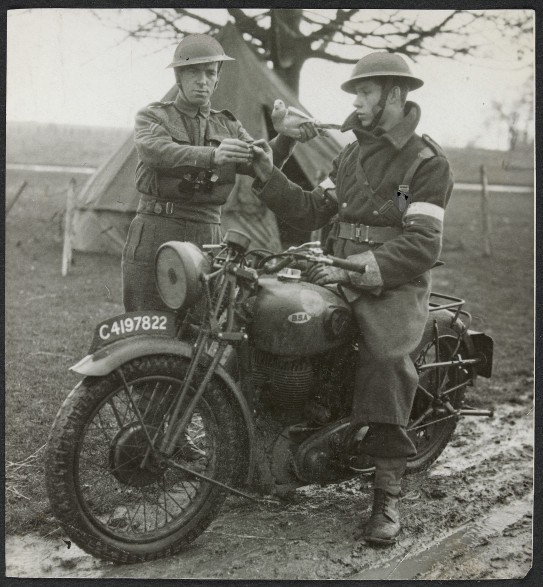
H2000.200/428 Message transferred from pigeon to dispatch rider – Argus Newspaper Collection of Photographs, State Library of Victoria.

H2000.200/430 Loading pigeon into special container for dropping over occupied territory – Argus Newspaper Collection of Photographs, State Library of Victoria.
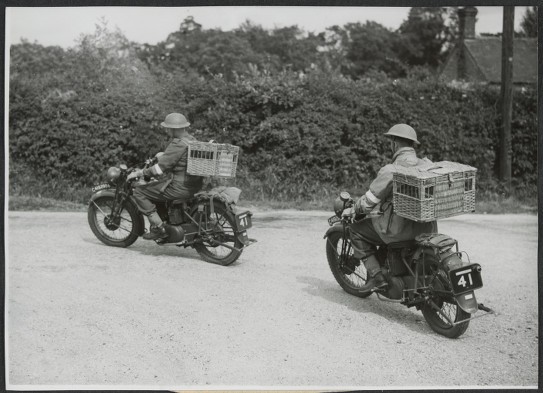
H2000.200/431 Pigeon dispatch riders on the road – Argus Newspaper Collection of Photographs, State Library of Victoria.
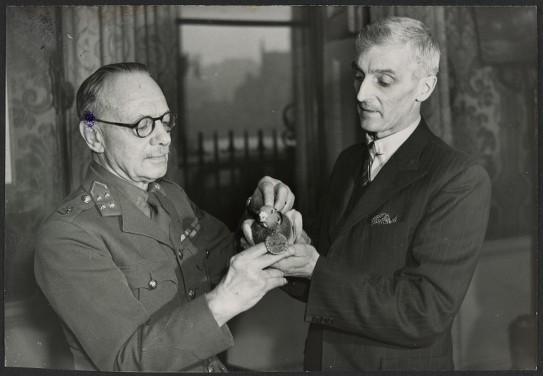
H2000.200/432 “Tommy” the pigeon (NURP.41.DHZ56) being awarded the Dicken medal for distinguished war service – Argus Newspaper Collection of Photographs, State Library of Victoria.

H2000.200/432 “Tommy” the pigeon being awarded the Dicken medal for distinguished war service (closeup) – Argus Newspaper Collection of Photographs, State Library of Victoria.
And finally, a couple of photos by H. J. Nott that appeared in a story reported in the Ottawa Journal, 12 January 1945, p.2:-
Canadian corvette, H.M.C.S. “Mayflower”, was given an unexpected chance to help speed the victory. The tired pigeon carried important information from a French patriot regarding gun emplacements and flying bomb platforms. It was sent aboard the “Mayflower” which broke wireless silence to send the information in code to shore authorities. The picture at the left shows the pigeon being passed in a bag from the tug to the Canadian corvette, and the one on the right shows the well-bred and mannerly visitor taking its ease by a porthole of the wardroom on board the “Mayflower”. Lieut Douglas Marlen, Halifax, was senior officer of the convoy, and the message written in French was translated by Sigmn. Andre Belland, Montreal.
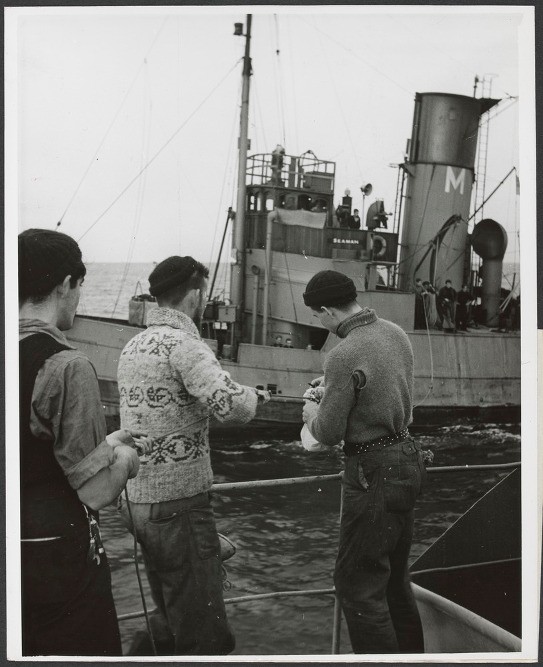
H2000.200/434 Pigeon being passed from British tug to Canadian corvette – Argus Newspaper Collection of Photographs, State Library of Victoria.
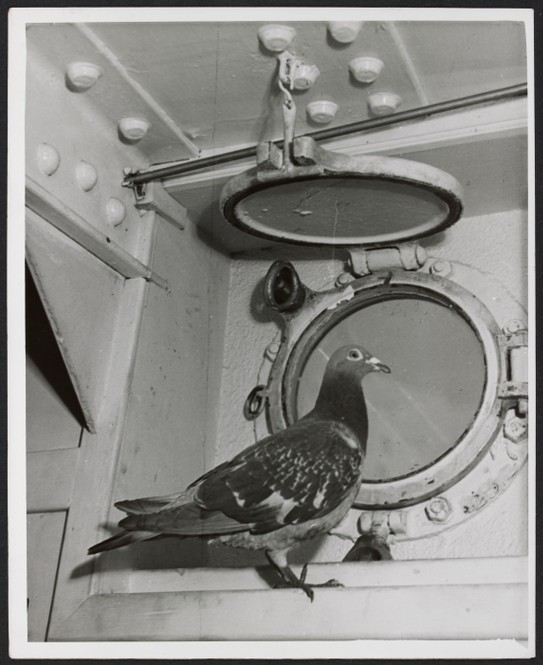
H2000.200/433 Weary pigeon resting on board the H.M.C.S. Mayflower, the ship sent its message on in code – Argus Newspaper Collection of Photographs, State Library of Victoria.
Thanx Nick for the further photos of those gallant birds. I know, they didn’t know they were gallant, but still…..
My sons grandmother was Australian. She married a scientist who was part of the American team working for the Manhattan Project.
A tetchy subject for me. When I was 6-7 y.o. I was a test subject for experimental use of Cobalt radiation to treat my cleft soft palate (post Enola Gay and all that).
BTW: What happened to the courageous (but dead) pigeon which was found in a chimney — which you posted about, about a year ago? Was the estimated speed of the birds flight still about a mile a minute (60 mph?) I hope somebody/organization gave that heroic bird some kind of a memorial.
I grew up with a talking ‘jail-bird’ (pet parakeet of a San Quentin prisoner who gifted the bird to my father. My father taught office-machine repair at San Quentin. My father also taught his canaries to sing. So, if all this talk about pigeons, parakeets, and canaries leads to any urge, by anyone on your pages to encourage me to divulge any more ‘secrets’ (to sing like a canarybird) — just ‘whistle-up’ a tune for me.
beady-eyed wonder
nice pigeons, but I want the BSA thumper!!!
absolutely brilliant idea to circulate these marvellous photos. Poetry.
Some similar pictures, but from WW I: http://longstreet.typepad.com/books/2010/11/world-war-i-images-pigeons-dardenelles-map-of-the-belgian-front-october-1915.html